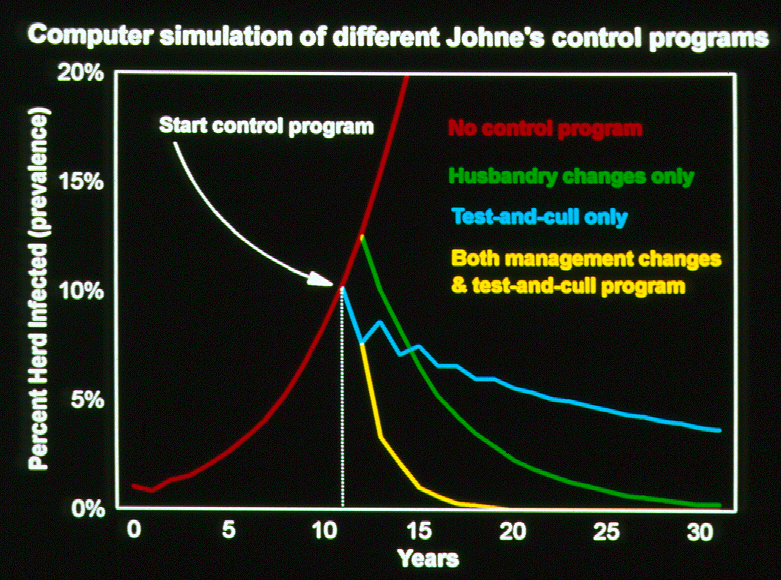Hungarian researchers reported on efforts to control paratuberculosis in 42 large dairy herds (average herd size 739 cows). This very practical study was reported in the January 2024 issue of Animals. The article is Open Access (free to everyone).
ABSTRACT
Paratuberculosis (PTB) is a severe, slow-developing, untreatable disease of ruminants. Worldwide, the disease affects more than 50% of herds in the dairy industry and causes substantial economic losses for dairy producers. Diagnostic tests show limited sensitivity, especially in the early stages of the disease. Our study aimed to investigate the seroprevalence of Mycobacterium avium ssp. paratuberculosis (MAP) in large-scale dairy herds in Hungary, in association with the self-reported presence or absence of screening and intervention measures against MAP transmission. We processed data from 42 large-scale Holstein Friesian farms in Hungary between 1 January 2018 and 31 December 2021. An average of 32,009 (min.: 31,702; max.: 32,207) animals were blood sampled yearly (127,372 in total during the four years), corresponding to 15% of the Hungarian dairy cattle population. All female cattle older than 2 years were blood sampled on the farms enrolled in the study. The samples were tested using a commercial ELISA (IDEXX paratuberculosis screening Ab test). Farm managers were interviewed about their on-farm diagnostic and intervention approaches using a uniform questionnaire, including questions on the level of awareness, frequency of ELISA and PCR testing, and their strategies for culling adult animals and reducing transmission to newborn calves. By comparing the annual rate of change in seroprevalence and the amount of change observed during the four-year period, we concluded that test-and-cull strategies implemented in parallel with newborn calf management that aimed at preventing MAP transmission were superior to test-and-cull strategies alone; moreover, fortifying culling decision making via additional ELISA and PCR tests is superior to using a single ELISA result. For farms that carried out a complex program with both “test-and-cull” and proper newborn calf management, there was a proportional reduction in apparent seroprevalence at an average of 22.8% per year. Fifteen of the sampled farms had no measures in place to control paratuberculosis. On these farms, the seroprevalence increased by 12.1% per year on average.
COMMENTS
The Hungarian study was an observational one, meaning that all the messiness of human behavior (herd managers, herd owners, and veterinarians, etc.) was included. Yet, the author’s careful study design and analysis made the findings credible, practical, and useful. This is one of the largest trials of its kind specifically focused on large commercial dairy cattle operations.
The study confirms that if owners are unaware of paratuberculosis in their herds, the infection rate continues to rise. Whole-herd testing and culling of test-positive cows alone, while helpful, is not sufficient to control paratuberculosis. Regular herd testing, with concrete actions taken with test-positive cows, must be paired with changes to herd management to limit the chances of MAP transmission for a control program to be truly successful. These findings are in full agreement with the computer simulation of paratuberculosis control in dairy herds published by Collins & Morgan in 1992 (Preventive Veterinary Medicine, 14:21-32) as shown in the graphic below (note the long time scale).

Over the course of this study, testing was voluntary and testing costs were subsidized by the state. As seen in many countries, when testing costs to herd owners are not subsidized, owners are far less likely to use diagnostic tests to control paratuberculosis. The impacts of this extend far beyond herd-level infection rates and herd productivity. Failure to control paratuberculosis in dairy herds means that a steadily increasing number of cows with become MAP-infected, more MAP will be found in raw milk and meat, and this will result in more MAP in the food supply with potential, if not probable, consequences for human health. The same holds true for other food-animal species affected by paratuberculosis. For more on this topic visit this page: https://johnes.org/presentations-and-mini-lectures/ and view the short presentation titled: MAP is a Zoonotic Pathogen.